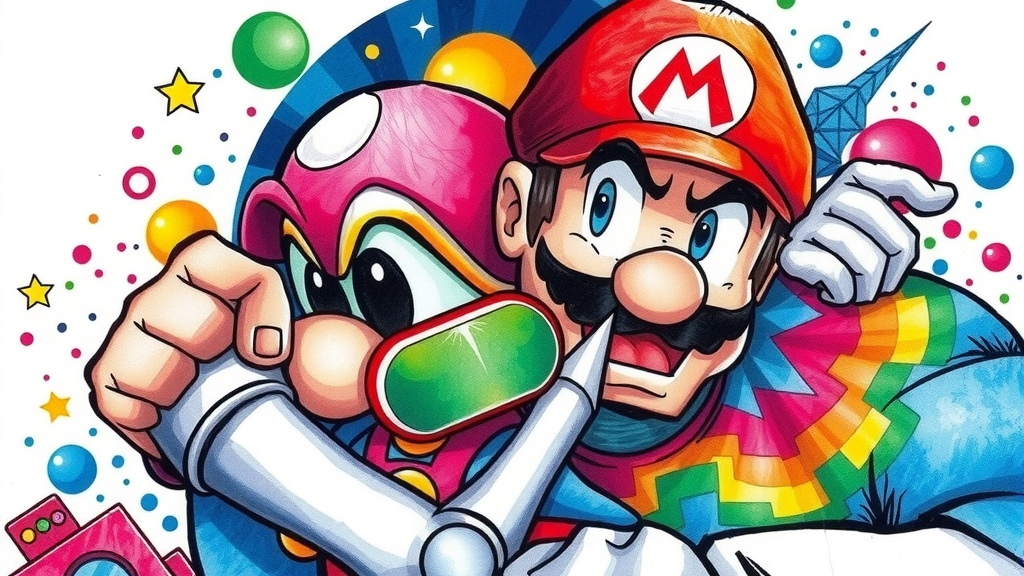
Plugging In and Powering Up the Past
Hey there, fellow retro gaming adventurers. Whether you’re dusting off an old console or rocking some pixel art tees, you know that magic feeling when you power on that 8-bit machine. The buzz of the CRT screen flickering to life, the satisfying click of a cartridge sliding into place, and that unmistakable beep that signals a world of pixelated fun awaits. It’s more than just nostalgia; it’s a bridge to a time when games were simple yet deeply enthralling.
Let’s take a joyride back to those days of chunky cartridges, glowing screens, and joystick battles. This isn’t just about old games, but about the legacy of those 8-bit heroes who didn’t just define a generation of gamers, but shaped the entire gaming culture that thrives today.
Pixels and Power-Ups Remembering the First 8-Bit Adventures
Remember that very first moment when your console beeped to life? Maybe it was the NES, the Sega Master System, or one of its contemporaries. The screen glowed with vibrant blocks of color, characters made of clearly visible pixels, and sounds that now seem charmingly pixelated but were once cutting-edge.
Trying to make sense of the 8-direction D-pad was almost a game within a game. You might have blown into the cartridge to coax the system into accepting your favorite title, wrestling with the joystick or marveling at how simple button combinations could unleash explosions, magic, or a power-up mushroom that seemed like the best prize on earth. These limitations forced our imaginations to stretch, making the characters and worlds feel bigger than their pixel count.
Some of our earliest memories are intertwined with games like Super Mario Bros, The Legend of Zelda, and Metroid. Those catchy chiptune melodies still echo in our minds, and the urge to beat “just one more level” was a challenge many of us couldn’t resist. Defeating a boss, finding a hidden bonus, or simply navigating tricky platforming sections shaped how we think about perseverance and creativity today.
Living Room Arcades The Social Side of 8-Bit Gaming
Back in the day, the living room TV wasn’t just an entertainment hub; it was a glowing portal where epic showdowns unfolded between siblings, friends, and sometimes parents who wanted to “just try one level.” CRT televisions with their signature flicker and scan lines created a warm, inviting atmosphere, turning every game session into an event.
Before online multiplayer was a thing, gaming was tactile and social. Sharing high scores meant scribbling down passwords, lending controllers (and sometimes arguing over who got the next turn), and cheering each other on during those nail-biting moments. The couch became a frontline of friendly competition and sometimes teamwork, especially when co-op mode was available.
And let’s not forget the arcades — those buzzing temples of quarters and neon. Standing shoulder to shoulder with other players, fueled by the electric energy of buzzy cabinets and relentless beeping sounds, made gaming feel like a rite of passage. The culture around those machines—token clutches in pockets, trading tips with strangers, or savoring the rush of beating a record—built bonds that went beyond the pixels on screen.
From Cartridge Clutches to Controller Collections Tactile Love for Retro Tech
There is something undeniably satisfying about holding a physical game cartridge. The molded plastic, the crisp label art, and the sensation of clicking it into place create a ritual that feels alive and personal. Early controllers, with their chunky buttons and sometimes awkward designs, had a unique character that’s missing from today’s sleek devices.
Unboxing a new game back then was about so much more than software. The printed manuals, filled with artwork and lore, allowed players to dive deeper into the story and rules, engaging the imagination beyond the screen. These artifacts became precious keepsakes, treasured alongside the games themselves.
For many of us, the act of collecting retro games and hardware has become a way to hold onto those feelings. Each cartridge, console, and joystick is a tactile link to a simpler, analog time. Even if you never intend to play all those titles again, the hardware’s presence evokes stories and sparks creativity, connecting us to an era where gaming was as much about discovery and community as it was about high scores and conquering worlds.
Echoes of 8-Bit in Today’s Gaming Landscape
Fast forward to now, and it’s amazing how deeply 8-bit aesthetics continue to influence the games we play today. Indie developers especially take inspiration from pixel art and chiptunes, crafting fresh worlds that honor the past while pushing gameplay in new directions. Titles like Shovel Knight, Celeste, and Undertale show how powerful simplicity and nostalgia can be when paired with modern design sensibilities.
Even major studios pay homage to 8-bit heroes by remixing retro styles or inserting pixel art sequences to evoke that old-school feel. And beyond visual style, the core appeal lies in gameplay fundamentals, like straightforward controls and clear goals, which continue to resonate despite the complexity of today’s triple-A titles.
Personally, nothing beats loading up those classic games on original hardware for a blast from the past, or watching my younger family members experience these titles for the first time. It’s a reminder that these pixelated heroes have a timeless charm, capturing hearts one blocky frame at a time and bridging generations through shared play and storytelling.
Carrying the 8-Bit Spark Forward
Those early gaming moments are more than childhood memories. They shaped how we think about creativity, problem-solving, and community. The pixelated heroes of the 8-bit era laid the groundwork for a culture that values passion, innovation, and connection. Whether we’re players, collectors, creators, or fans, the spirit of those buzzing cartridges and glowing CRTs lives on within us.
So, here’s to the simplest pixels telling the grandest stories. Keep celebrating, keep sharing, and keep powering up those memories. Because sometimes, the best way forward is to press play on the past.